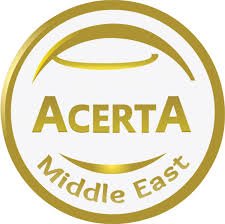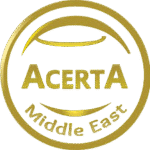In industries like oil and gas, chemicals, and manufacturing, where processes involve flammable, toxic, or reactive substances, the potential for major accidents is ever-present. Process Hazard Analysis (PHA) is a structured approach to identifying, evaluating, and controlling hazards to prevent catastrophic incidents like fires, explosions, or toxic releases. By using methods like HAZOP, HAZID, and What-If analysis, PHA ensures facilities operate safely and comply with regulations. This article explores the principles, methodologies, and practical applications of PHA, with insights into how
Cormat Group implements these techniques to safeguard workers, assets, and the environment.
What is Process Hazard Analysis (PHA)?
Process Hazard Analysis (PHA) is a systematic methodology used to identify and assess potential hazards in industrial processes, evaluate their risks, and implement controls to mitigate them. It focuses on major accident hazards (MAHs) that could lead to severe consequences, such as injuries, fatalities, equipment damage, or environmental harm. PHA encompasses various techniques, including:
- HAZOP (Hazard and Operability Study): A structured method that examines process deviations to identify potential hazards and operational issues.
- HAZID (Hazard Identification): A high-level approach to identifying hazards early in the project lifecycle, often during design or planning.
- What-If Analysis: A brainstorming technique that explores “what-if” scenarios to uncover potential risks and their consequences.
PHA is a key requirement in industries regulated by frameworks like the UK’s Control of Major Accident Hazards (COMAH), OSHA’s Process Safety Management (PSM) standard, or ISO 45001. For example, in a chemical plant, a HAZOP study might identify a pressure deviation in a reactor, leading to controls like pressure relief valves. The goal is to reduce risks to As Low As Reasonably Practicable (ALARP) by proactively addressing hazards.
Why is Process Hazard Analysis Important?
PHA is critical for ensuring safety and compliance in high-hazard industries. Its key benefits include:
- Preventing Catastrophic Incidents: By identifying hazards early, PHA prevents fires, explosions, or toxic releases that could harm workers or communities.
- Regulatory Compliance: Regulations like COMAH and PSM require PHAs to demonstrate due diligence in managing process risks.
- Protecting Assets: Mitigating hazards reduces damage to equipment, minimizing costly downtime and repairs.
- Environmental Protection: PHA prevents releases that could contaminate air, water, or soil, safeguarding ecosystems.
- Operational Efficiency: Addressing operational issues during PHA improves process reliability and reduces interruptions.
- Stakeholder Confidence: Cormat Group builds trust with employees, regulators, and communities by implementing robust PHA processes.
A 2023 report by the Health and Safety Executive (HSE) found that facilities conducting regular PHAs reduced major incident rates by 40%, highlighting the value of this proactive approach.
Key Components of Process Hazard Analysis
PHA is built on several core elements that ensure a comprehensive risk management strategy:
1. Hazard Identification
Identify potential hazards, such as flammable gases, toxic chemicals, high-pressure systems, or reactive materials, using process data and historical incidents.
2. Scenario Analysis
Define credible accident scenarios, such as equipment failures, human errors, or external events (e.g., power outages), that could lead to MAHs.
3. Risk Assessment
Evaluate the likelihood and consequences of each scenario, using qualitative or quantitative methods to prioritize risks.
4. Control Measures
Identify preventive controls (e.g., safety interlocks, operator training) and mitigative controls (e.g., fire suppression, emergency shutdowns) to reduce risks.
5. ALARP Demonstration
Demonstrate that risks are reduced to ALARP by balancing the cost of additional controls against the safety benefits achieved.
6. Documentation
Create detailed PHA reports, including hazard lists, risk assessments, and recommended controls, to support audits and compliance.
7. Action Tracking
Assign responsibilities and timelines for implementing control measures, ensuring accountability and follow-through.
PHA Methodologies: HAZOP, HAZID, and What-If
Each PHA technique serves a specific purpose, tailored to the facility’s needs and project stage:
HAZOP (Hazard and Operability Study)
HAZOP is a detailed, structured method that examines process deviations by applying guidewords (e.g., “more,” “less,” “none”) to parameters like flow, pressure, or temperature. It identifies potential hazards and operability issues. For example, in a pipeline, “no flow” might indicate a blockage, leading to overpressure and a potential rupture.
- Process: Divide the system into nodes (e.g., a pump or reactor), apply guidewords, and assess deviations, causes, consequences, and controls.
- Best For: Detailed design or operational phases of complex processes.
HAZID (Hazard Identification)
HAZID is a high-level, qualitative method used early in the project lifecycle to identify major hazards. It involves brainstorming sessions with multidisciplinary teams to list potential risks, like fires or chemical spills.
- Process: Use checklists or brainstorming to identify hazards, assess their impacts, and recommend controls.
- Best For: Conceptual design or early project stages.
What-If Analysis
What-If Analysis is a flexible, brainstorming-based approach that explores hypothetical scenarios (e.g., “What if the pump fails?”) to identify risks and controls. It is less structured than HAZOP but effective for simpler systems.
- Process: Pose “what-if” questions, evaluate consequences, and propose mitigation measures.
- Best For: Smaller facilities or preliminary hazard assessments.
Methodology for Conducting a Process Hazard Analysis
Conducting a PHA requires a structured, collaborative approach that integrates technical expertise and operational insights. Here’s a step-by-step guide:
Step 1: Define the Scope
Determine the process or system to be analyzed, such as a distillation unit or a gas storage facility. Define boundaries to focus the analysis.
Step 2: Assemble a Multidisciplinary Team
Form a team of experts, including process engineers, operators, safety professionals, and maintenance staff, to ensure diverse perspectives.
Cormat Group involves experienced teams to conduct thorough PHAs.
Step 3: Gather Process Data
Collect detailed information, including:
- Process flow diagrams (PFDs) and piping and instrumentation diagrams (P&IDs).
- Material Safety Data Sheets (MSDS) for hazardous substances.
- Operating conditions (e.g., pressure, temperature).
- Historical incident data or near-misses.
Step 4: Select the PHA Method
Choose the appropriate method (HAZOP, HAZID, or What-If) based on the project stage and complexity. For example, use HAZOP for detailed process analysis or HAZID for early design.
Step 5: Identify Hazards
Use the selected method to identify hazards:
- HAZOP: Apply guidewords to process parameters, identifying deviations (e.g., “high pressure” in a reactor).
- HAZID: Brainstorm major hazards, like gas leaks or equipment failures.
- What-If: Pose hypothetical scenarios, like “What if the cooling system fails?”
Step 6: Assess Risks
Evaluate the likelihood and consequences of each hazard, using:
- Qualitative Methods: Risk matrices to rank risks based on severity and probability.
- Quantitative Methods: Tools like Quantitative Risk Analysis (QRA) to calculate risk levels (e.g., Individual Risk Per Annum).
Consider consequences like injuries, equipment damage, or environmental harm.
Step 7: Identify Control Measures
List preventive controls, such as:
- Safety interlocks or pressure relief valves.
- Operator training to reduce human error.
- Regular maintenance to prevent failures.
List mitigative controls, such as:
- Fire suppression systems.
- Emergency shutdown systems.
- Escape, Evacuation, and Rescue (EER) plans.
Link controls to Health, Safety, and Environment Critical Equipment and Systems (HSECES).
Step 8: Demonstrate ALARP
Show that risks are reduced to ALARP by:
- Evaluating the effectiveness of controls in reducing risk.
- Conducting cost-benefit analyses of additional measures (e.g., more sensors vs. risk reduction).
- Comparing controls to industry standards or regulatory requirements.
Document the rationale for accepting residual risks.
Step 9: Document Findings
Create a detailed PHA report, including:
- Identified hazards and scenarios.
- Risk rankings and control measures.
- Action items with assigned responsibilities and deadlines.
Ensure the report is clear and accessible for audits and training.
Step 10: Implement Controls
Execute recommended control measures, such as installing new equipment, updating procedures, or enhancing training. Verify implementation through inspections or tests.
Step 11: Train Personnel
Train employees on:
- Recognizing hazards identified in the PHA.
- Following updated procedures or controls.
- Responding to emergencies, like activating shutdown systems.
Conduct regular drills to reinforce training.
Step 12: Monitor and Review
Regularly review the PHA to reflect changes in processes, equipment, or regulations. Conduct follow-up PHAs every few years or after significant incidents, like near-misses or process modifications.
The Role of Technology in PHA
Technology enhances the efficiency and accuracy of PHA:
- PHA Software: Tools like PHA-Pro or BowTieXP streamline hazard identification, risk assessment, and documentation.
- Modeling Tools: Software like PHAST or CFD simulates fire, explosion, or dispersion scenarios, informing risk assessments.
- Digital Twins: Virtual models test process scenarios, identifying hazards during design phases.
- Artificial Intelligence (AI): AI analyzes historical incident data to predict risks, improving PHA outcomes.
- Asset Management Systems: Tools like SAP track control implementation and maintenance, ensuring compliance.
Cormat Group leverages these technologies to conduct precise and efficient PHAs, ensuring robust risk management.
Conclusion
Process Hazard Analysis (PHA), encompassing techniques like HAZOP, HAZID, and What-If, is a vital tool for managing risks in high-hazard industries. By identifying hazards, assessing risks, and implementing controls, PHA prevents catastrophic incidents and ensures compliance.
Cormat Group demonstrates how a rigorous PHA process drives safety excellence, protecting lives, assets, and the environment. Despite challenges like complexity and data limitations, technology, team collaboration, and regular reviews can overcome them. As industries evolve, PHA will remain essential for building safer, more resilient workplaces.


